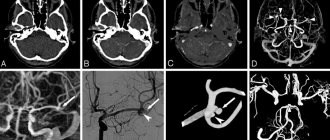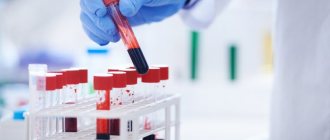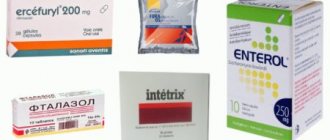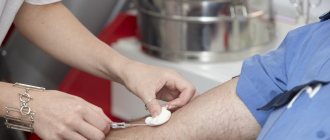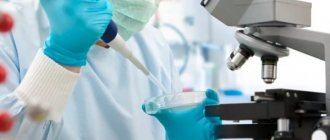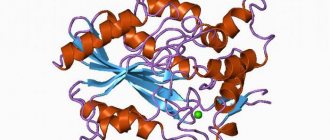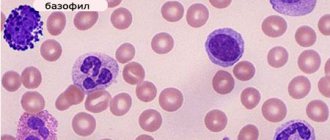Immunochemical blood test: preparation and interpretation of the main indicators
If a couple cannot conceive a child or is just planning one and wants to prevent problems from occurring, the gynecologist and andrologist will refer both partners for a blood test to determine hormone levels.
Decoding the research results will make it possible to understand where the problem is hidden and how it can be eliminated.
This study is not a preventive measure. It is usually prescribed for the following indications:
- Genetic predisposition to immune pathologies. The analysis allows us to identify the slightest disruptions in the functionality of the immune system. Such disorders soon provoke the development of immunodeficiency, the true cause of which is very difficult to determine. Often, immune diseases have a genetic predisposition and appear suddenly at any age.
- Suspicion of oncological pathologies. The analysis also includes tumor markers. It shows not only the presence of malignant cells, but also shows the patient’s percentage predisposition to the formation of tumors.
- Problems with conception. Couples who have had difficulty conceiving for a long time may undergo sex hormone testing to determine the cause and degree of compatibility with their partner.
- Autoimmune diseases. They arise as a result of disruption of the normal functioning of the immune system, which acts as an aggressor in relation to its own body, and not a defender.
Autoimmune disease
Taking blood for immunochemical analysis is no different from biochemical analysis. A laboratory technician takes venous blood from a patient. Next, the serum is analyzed by a special laboratory device. Thanks to technological progress, the test result can be obtained within half an hour after blood sampling, but in our country, most laboratory institutions issue it 2-3 days after the procedure.
Preparatory measures are not complicated or lengthy. To obtain the most accurate result, the patient must:
- Do not eat 12 hours before blood collection.
- Carry out the procedure on an empty stomach.
- Donate blood before 11 p.m.
You are allowed to drink 200-250 ml of clean water before the procedure.
Although this test does not include liver tests and TSH levels, experts recommend eliminating fatty foods and protein-enriched foods from your daily diet 3-4 days before the test. This ban is due to the fact that these substances make the blood more viscous, which makes the serum cloudy and complicates the examination.
It is not advisable to smoke 24 hours before the test. Statistics show that only 8 percent of patients adhere to this recommendation. Because of this, doctors ask not to take nicotine at least on the morning of the procedure.
Fatty dish
Female patients should definitely notify their doctor about the phase of their menstrual cycle. The day on which the blood is taken greatly influences the concentration of sex hormones, since this indicator is associated with the menstrual cycle. If the expectant mother undergoes the test, the doctor must take into account the gestation period of the child.
Protein Fortified Foods
One of the most important preparatory aspects is taking medications. Ideally, the patient is obliged to stop taking medications a week and a half before the test, but if this is not possible, then the doctor must take into account all these nuances when deciphering the indicators.
It is strictly forbidden to take a test after physical exertion or emotional stress, since these processes affect the chemical composition of the blood. Before visiting the laboratory assistant, the patient must sit quietly for at least 25 minutes.
Blood condition - information for diagnosis
Before conducting an immunological test, the specialist prescribes basic and less expensive blood tests. They are standard and expanded.
These tests are often sufficient to determine the disease and prescribe therapy:
- General analysis. It is carried out for all diseases and preventive examinations.
- Biochemical analysis. Necessary for assessing the functioning of internal organs and is able to show their condition. Used by doctors in all areas of medicine.
These blood tests are ready on the second day and are much easier to decipher than an immunity test. The blood parameters studied have standard boundaries.
The resulting immunological blood tests must be interpreted correctly. It is often difficult to distinguish a patient's individual norm from pathology. The results obtained, symptoms, and other research methods are analyzed.
All tests must be taken in one laboratory, since the methods for determining parameters may differ. This is the only way to compare them and draw conclusions.
Now many people are asking questions: how to test immunity? An immunogram must be prescribed by a doctor. Only he, based on the symptoms, can determine what parameters are needed for the study. You can’t just come to the laboratory and donate blood to test your immunity. For a non-specialist, the resulting result is simply a set of numbers that shows nothing.
Immunological blood test
is a laboratory research method that allows you to assess the state of general immunity, its intensity - that is, how much the body’s defense system is involved at the time of analysis, determine the number and function of immune blood cells, and the presence of antibodies in it. Immunological analysis can identify primary and secondary immunodeficiencies and help in the diagnosis of autoimmune, hematological, infectious and lymphoproliferative diseases.
Who is it prescribed to?
The method of interaction between antibody and antigen can be used to obtain the most detailed picture of the patient’s condition with many organic lesions. Thus, chemiluminescence immunoassay is most often used when examining a patient’s condition when the following diseases are suspected:
- when diagnosing infections of the urogenital area. In this case, the presence of various types of pathological bacteria that can colonize human genitals is detected. A feature of the method is the detection in blood serum of specific substances (immunoglobulins or proteins) that are formed during the life of pathogenic microorganisms;
- for a diagnostic study of the condition and functioning of the thyroid gland, which is responsible for the processes of body growth, metabolism and mental development. When it is unstable, there is a depressed state of the nervous system, disruptions in the regulation of the menstrual cycle in women, unexpected weight loss and instability of the mental state. Therefore, identifying the cause of the listed manifestations using chemiluminescence immunoassay is the most accurate among other diagnostic methods;
- when conducting diagnostic analysis for various female diseases;
- during prenatal screening of pregnant women, the degree of production of certain substances by fetal tissues is determined. Using the obtained analysis results, you can get an idea of the process of fetal development, its functioning and the presence of the initial stages of organic disorders;
- in the process of diagnosing hepatitis of various types;
- chemiluminescence immunoassay is also used in a comprehensive examination of patients who are suspected of having cancer of various locations;
- chemiluminescence immunoassay can be prescribed to women during pregnancy to monitor the degree of development of the fetus, as well as the presence of possible deviations in its development;
- it is recommended during the period when pregnancy is planned: the analysis helps to identify diseases of the reproductive system of women that can have a negative impact on the newborn. This type of study is scheduled to be carried out 2-3 months in advance for a planned pregnancy;
- chemiluminescence immunoassay has proven itself well in identifying cancerous lesions, which is especially often used in diagnosing and determining the stage of the pathological process in the prostate gland in men.
ICHLA is also performed for Quincke's edema and some other ailments.
What the principle of chemiluminescence immunoassay is used for is described below.
Importance and Benefits of Analysis
This test includes checking the amount of immunoglobulins and reproductive hormones. Hormonal and immunoenzyme diagnostics make it possible to understand the general condition of the human body, the quality of its protective and reproductive functions.
This diagnostic method is quite expensive, but its results are worth it. With its help, a specialist can make a final diagnosis even in the most difficult cases. For example, thanks to an enzyme immunoassay, a doctor can determine the antigen-antibody ratio, that is, see the number of antibodies that react to various stimuli. Today, ELISA is considered the most informative when diagnosing infectious diseases.
In addition to high performance, ICA has another undeniable advantage - accessibility. Almost every medical laboratory provides such a service. A comprehensive analysis is prescribed in very rare cases, since most patients need to check one or more indicators.
This analysis determines:
- Anemia.
- Oncological pathologies.
- Hormonal disorders.
- Infertility.
- Infectious and viral diseases.
- Diabetes.
This analysis is considered a comprehensive study and consists of the following indicators:
IgA. This substance regulates the protective function of the mucous membrane of the bronchi, kidneys, bladder, lungs, and gastrointestinal tract. In case of exacerbation of pathologies, it is still difficult to determine; the earliest period of detection is 14-17 days after the development of infection. When diagnosed at a later stage, it can show the chronic nature of the disease. IgE. Determines allergic and parasitic processes. Unfortunately, it does not respond to all pathogens, so the patient may require additional examinations. IgM. Exacerbation indicator Violation of the norm is recorded already on the fifth day after the irritant enters the human body. The elevated IgM level decreases to acceptable levels within 35 days. IgG. Residual immunoglobulin fixes the formation of immunity to some disease or pathology. It appears in the serum already 26-29 days after the onset of the disease. It can be fixed in the plasma for several years or even throughout life, and its indicator is not considered a symptom of the development of the disease. IgD. Its low rate is considered the norm for all people. An increase or decrease in this norm is regarded as a sign of physiological and immunodeficiency failure. Luteotropin. Pituitary hormone necessary for the proper functioning of the gonads
This substance is very important for our body, as it ensures the production of testosterone, estrogen and progesterone. In the female body, luteotropin ensures the menstrual cycle
Prolactin. A characteristic hormone of the lactation period, it is activated during gestation. If the rate increases not due to pregnancy, it will interfere with the production of other hormones. Estradiol. In the female reproductive system it is considered the most active substance. Thanks to it, women develop secondary sexual characteristics, menstruation, and the egg matures.
Immunochemical study of blood serum and urine
Found (17 posts)
hematologist January 5, 2020 / Elena / NEW Male 57 years old.
From the anamnesis - in 02/2011, he underwent an operation at his place of residence for radical removal of prostate cancer with a moderate risk of biochemical relapse. Histology... open (2 more messages)Last 5:
January 5, 2020 / Dmitry Aleksandrovich Bykov... about suspected monoclonal gammopathy of undetermined significance (MGUS).
Additional examination is required: immunochemical examination blood
serum and 24-hour
urine
,
blood
examination for the level of antiplatelet antibodies, ... hematologist October 13, 2015 / Irina / Izhevsk Hello!
She underwent a trepanobiopsy procedure, the result showed plasmacytosis of 2%. The hematologist said that the result can be attributed to the normal variant, although in fact the norm... open October 13, 2020 / Bykov Dmitry Aleksandrovich Theoretically, it is possible to do an immunochemical study blood
serum and
urine
to exclude monoclonal secretion (to exclude the diagnosis of “monoclonal gammopathy of undetermined significance”).
hematologist September 20, 2020 / Yulia / Penza Hello! My father has been suffering from multiple myeloma since 2012. I have now completed my fourth course of alkeran and cyclophosphamide. The course of taking the drug is carried out after four weeks... open September 22, 2020 / Dmitry Aleksandrovich Bykov... ECG. To clarify the effectiveness of treatment for myeloma, it is necessary to conduct an examination - a bone marrow puncture and an immunochemical study blood
serum and
urine
.
As it progresses, it may be necessary to change the treatment regimen... hematologist February 14, 2020 / Irina / Baksan Multiple myeloma??? I kindly ask you to assess the situation based on the data provided and recommend tests to make an accurate diagnosis. Diagnoses: Chronic hepatitis,... open February 16, 2020 / Bykov Dmitry Aleksandrovich To exclude multiple myeloma, an immunochemical study blood
serum and
urine
,
study
.
But the picture does not fit into multiple myeloma. hematologist January 22, 2013 / Sergey / Ulyanovsk Good afternoon! Dear doctor! My father, 60 years old, was tested for an immunochemical study
blood
serum and
urine
proteins .
Please tell me what this means: Albumin-40.5% Globulins: alpha1- 3.1%, ... open January 24, 2014 / Andrey ... with a diagnosis. Tests for the immunochemical study
blood
serum and
urine
proteins are as follows: Albumin-27 ... and makes up 47.7% of the total
serum
or 59.1 g/l.
total protein... b2-m - 9.39, CRP - 4.46 urine
: On EPH - traces of albumin, trace... hematologist November 14, 2013 / Marina Good afternoon!
Please tell me what blood tests should be taken if multiple myeloma is suspected. Thank you. open November 15, 2013 / Bykov Dmitry Aleksandrovich General clinical blood
+ leukocyte formula + ESR + biochemical studies (glucose, urea, uric acid, creatinine ... not in all laboratories\
immunochemical study blood
serum (and
urine
), level of free light chains ... hematologist July 24, 2013 / Elena / Krasnodar Hello! My brother was diagnosed with multiple myeloma 3 years ago. He refused chemotherapy then. A week ago he was hospitalized with suspicion of... open July 25, 2013 / Bykov Dmitry Aleksandrovich ... in absentia. This means that there were some indications specifically for CT.
To exclude multiple myeloma, a study
bone marrow,
immunochemical examination blood
serum and
urine
, bone radiography.
hematologist February 12, 2013 / Alisa / 0 Question to the hematologist. Dear doctor! I am writing to you with the following question: I am a 44-year-old woman. After a mild cold (one day t-37.8), I have been feeling terrible weakness for a month now. By evening... open February 14, 2013 / Bykov Dmitry Aleksandrovich to do an immunochemical study blood
serum and
urine
at the State Research Center Hematologist December 27, 2011 / Tatyana / Tula Hello, I’m adding to the message about the lymph nodes.
Latest blood test: erythr.-4.82, hemog.-137, gmatocrit-40.2, avg. erythr volume - 83.4, avg. hemoglobin content in RBC(MCN)-28.4, SR END... open (6 more messages)Last 5:
February 14, 2012 / Tatyana... -cellular, single megakaryocytes in the smear.
Immunochemical
study
of
serum proteins : Albumin-64.5%, Globulins: alpha1-2.3%, ... neutrophils-42%, band neutrophils-3% In general
urine
protein-0.100 hl
ultrasound: right lobe liver-147...
Decoding: norm and pathology
Deviation of indicators from the norm is an alarming sign!
The doctor deciphers the immunochemical analysis. Immunochemical analysis is quite complex, it includes many indicators and has many nuances. It is not recommended to decrypt it yourself.
It is worth remembering that to make a diagnosis, not only the result of the examination is taken into account, but also the collected anamnesis, their combination and other factors.
Decoding of the main indicators of the analysis:
- Immunoglobulin A. Normally, it makes up 15% of the total amount of immunoglobulins in the blood. If the indicator is elevated, this may indicate lupus erythematosus, diseases of the liver, kidneys, and connective tissue. A reduced level is observed in cirrhosis and poisoning.
- Immunoglobulin E. Usually they only talk about increasing this immunoglobulin. An elevated level indicates the presence of parasites in the body or atopic allergic reactions (swelling, rhinitis, rash, redness and itching of the skin, eczema, urticaria).
- Immunoglobulin M. Makes up no more than 5% of the total number of immunoglobulins. Its level increases with acute infections of various etiologies, candidiasis, serious liver damage, and lupus erythematosus.
- Prolactin. In men, the norm is clearer, since in women it depends on the state of the body and the cycle. For men, the norm is 105-540 mIU/l, for women – from 65 to 726 mIU/l. Normally in women, the level increases during lactation. Prolactin levels are also affected by certain drugs and diseases such as tuberculosis, polycystic ovary syndrome, and pituitary tumors.
- Luteotropin. The level of this hormone in women changes over the course of the cycle, and in men it ranges from 1.14 to 9 mU/l. A reduced level occurs with tumor processes of the pituitary gland, obesity, amenorrhea, an increased level occurs with polycystic ovary syndrome, renal failure, endometriosis, and prolonged fasting.
When deciphering the results, it is important to take into account the patient’s hereditary predisposition to the disease, his condition (cycle, pregnancy, presence of chronic diseases), as well as the likelihood of error and improper preparation
Diseases for which a doctor may prescribe immunological tests
Rheumatoid arthritis
Rheumatoid arthritis is characterized by an increase in the content of immunoglobulin A (IgA), immunoglobulin G (IgG) and immunoglobulin M (IgM); increase in antinuclear factor.
Osteomyelitis of the thigh
Osteomyelitis of the leg bones
Osteomyelitis is characterized by an increase in the concentration of antistreptolysin-O, a marker of the presence of streptococcal infection in the body.
Osteomyelitis of the calcaneal tuberosity
Osteomyelitis is characterized by an increase in the concentration of antistreptolysin-O, a marker of the presence of streptococcal infection in the body.
Erysipelas
Erysipelas is characterized by an increase in the concentration of antistreptolysin-O, a marker of the presence of streptococcal infection in the body.
Bronchial asthma
Bronchial asthma is characterized by an increase in the content of immunoglobulin E (IgE).
Multiple myeloma
Multiple myeloma is characterized by an increase in the content of immunoglobulin A (IgA) and immunoglobulin G (IgG).
Oral candidiasis
Acute glomerulonephritis
Acute glomerulonephritis is characterized by an increase in the content of immunoglobulin A (IgA), an increase in the concentration of antistreptolysin-O, a marker of the presence of streptococcal infection in the body.
Liver echinococcosis
Autoimmune thyroiditis
Autoimmune thyroiditis is characterized by an increase in the concentration of antibodies to thyroglobulin (AT-TG) and to thyroid peroxidase (AT-TPO).
Acute tonsillitis
With angina, it is possible to increase the concentration of antistreptolysin-O, a marker of the presence of streptococcal infection in the body.
Vasomotor and allergic rhinitis
Allergic rhinitis is characterized by an increase in the content of immunoglobulin E (IgE).
Chronic tonsillitis
Chronic tonsillitis is characterized by an increase in the concentration of antistreptolysin-O, a marker of the presence of streptococcal infection in the body.
Diffuse toxic goiter
Diffuse toxic goiter is characterized by an increase in the concentration of antibodies to thyroglobulin (AT-TG) and to thyroid peroxidase (AT-TPO).
Pulmonary candidiasis
Candidiasis is characterized by an increase in the content of immunoglobulin M (IgM).
Subacute thyroiditis
Subacute thyroiditis is characterized by an increase in the concentration of antibodies to thyroid peroxidase (AT-TPO).
Scarlet fever
Scarlet fever is characterized by an increase in the concentration of antistreptolysin-O, a marker of the presence of streptococcal infection in the body.
Infectious mononucleosis
Infectious mononucleosis is characterized by an increase in the content of immunoglobulin G (IgG).
Urogenital candidiasis
Candidiasis is characterized by an increase in the content of immunoglobulin M (IgM).
Chronic glomerulonephritis
An increase in the content of immunoglobulin A (IgA) is possible with glomerulonephritis.
Chronic hepatitis
With hepatitis of the liver, an increase in the content of immunoglobulin M (IgM) is possible. Antinuclear factor is increased in chronic hepatitis.
Cirrhosis of the liver
Sjögren's syndrome
Noting an increase in the levels of immunoglobulins IgG and IgM; the presence of antibodies to DNA, LE cells, antibodies to the epithelium of exocrine glands, an increase in the number of B lymphocytes, a decrease in the number of T lymphocytes.
Systemic lupus erythematosus
An increase in the content of immunoglobulin A (IgA), immunoglobulin G (IgG), immunoglobulin M (IgM) is possible with systemic lupus erythematosus. Antinuclear factor, when determined together with antibodies to DNA, is a diagnostic criterion for systemic lupus erythematosus, in which it is elevated.
Scleroderma
Autoantibodies specific to scleroderma are detected.
Autoimmune chronic gastritis
With autoimmune chronic gastritis, there is a decrease in IgA and IgG, an increase in the level of B-lymphocytes and T-helpers by more than 6 times, and the appearance of autoantibodies to parietal cells and gastromucoprotein.
Primary biliary cirrhosis of the liver
In primary biliary cirrhosis, an immunological study detects antimitochondrial antibodies (AMA) - a highly specific marker of PBC, in a titer above 1:40, increased levels of IgM and IgG.
Periarteritis nodosa
An increase in the content of immunoglobulin M (IgM), an increase in antinuclear factor is possible with systemic vasculitis.
It is based on identifying antibodies to a specific antigen in the blood and determining their concentration. These can be antigens of bacteria, viruses, parasites, or the body’s own (changed or unchanged) antigens. Since immunoglobulins are always specific to an antigen, their detection in the blood clearly indicates the presence of a specific antigen.
IHC studies: what is it and how is it carried out?
To perform IHC, biomaterial is required, the collection of which is carried out mainly by taking a biopsy. Somewhat less commonly, it is obtained during endoscopic or classical open surgery. The method of removing the affected tissue depends on the type and location of the cancer. It should be noted that the material should be taken for analysis before starting therapy. Otherwise, the study results may be distorted.
Stages of analysis:
- The resulting biomaterial is fixed, processed in formaldehyde, and sent to the laboratory.
- Then it is degreased and re-fixed, after which it is filled with paraffin.
- Next, microtomy is performed - thin sections are made from the finished paraffin blocks, which are placed on special glasses. The slice thickness is no more than 1 micron.
To collect the material, a tumor biopsy is prescribed or a piece of tissue is removed during surgery.
When the tissues lie on the glasses, they are treated with an antibody solution. The number of their species is limited to several dozen. The study of reactions using up to 5 different antibodies is carried out on a small panel. For a larger experiment, a larger panel is needed.
During IHC, cancer of any organ is manifested by a glowing effect - fluorescence - due to which malignant cells are identified, hormone receptors or other specified parameters are determined.
Interpretation of research results: norm and pathology
Before referring a patient for a comprehensive immunochemical analysis, the doctor must collect some information about the patient so that after the study, the results can be correlated with the person’s medical history.
Additional information may include:
- Determining the relationship between the clinical picture of the disease and changes in the immune system.
- Determination of differences between indicators in the analysis and the norm.
- Collecting data about the onset of the disease.
- Information about what the patient was treated with and the amount of medications taken.
Below is data developed by scientists, which reflects the values of the main ICA indicators that may be acceptable, and the expected reasons for deviations from the norm:
- Immunoglobulin A – the norm is 17% of the total immunoglobulin. If the norm is exceeded, this may indicate lupus erythematosus, liver and kidney pathologies. Reduced levels occur with cirrhosis and poisoning.
- Immunoglobulin E – the norm is 0.2% of the total amount of blood immunoglobulin. When its level increases, this may indicate infection with helminths. They can manifest themselves as allergic reactions: eczema, itching, swelling, etc.
- Immunoglobulin M is a normal indicator - 5-5.2 percent of the total amount of the substance. When the indicator increases, liver pathologies, candidiasis, lupus, and infections in the acute stage are diagnosed.
- Prolactin – in men 103–535 mIU/l, in women 59–699 mIU/l. Elevated levels of this substance may indicate the presence of tuberculosis or a tumor in the pituitary gland; prolactin also increases after taking certain medications.
- Luteotropin - in men - 1.15-8.9 mU/l, in women the norm depends on the menstrual cycle. In men it causes the secretion of testosterone, in women it controls the menstrual cycle. A decrease may occur with tumors in the pituitary gland, obesity or amenorrhea, an increase with problems with kidney function, polycystic ovary syndrome, endometriosis or fasting.
In the video, the doctor talks about modern laboratory research methods:
Study parameters
Immunity testing is carried out according to the appropriate parameters, which are indicated in the direction of the attending physician based on the patient’s health condition.
The analysis is interpreted by an immunologist.
An immunochemical test may consist of various parameters for which there is a corresponding standard.
When assessing the patient’s condition in an immunity analysis, the doctor considers each group of parameters separately. Determining the amount of immunoglobulins of different types makes it possible to identify infections and track their development path. Based on the ratio and quantity of antibodies, we can conclude the severity of the disease.
Determining the level of lymphocytes allows you to quickly identify a lack of any type of white blood cells. Their phagocytic activity reflects the ability of cells to engulf harmful bacteria and viruses within the body. The circulating immune complex test measures how well the immune system forms the antigen-antibody chain. This process creates the body's response to the introduction of pathogenic microorganisms.
It is better to take tests in a well-equipped laboratory with a positive reputation. Immune status and analysis to study human immunity are important components of treatment. Immune system disorders can be congenital or develop gradually throughout life. Assessing the state of the body's defense system is relevant, first of all, for those patients who are susceptible to frequent colds and chronic inflammatory diseases (herpes, hepatitis, gastrointestinal diseases, etc.).
Immunological studies and their methods are used in a number of cases. These may include identifying pathologies, determining the current state of the immune system, and many other cases. It is known that such an analysis is based on the interaction of two substances: antigen and antibody.
Antigens are substances that enter the body as foreign high-molecular compounds, and the task of immunology is to determine and analyze the reaction. They have the following properties: immunogenicity, antigenicity, foreignness. Bacteria, viruses and other microorganisms are contained in antibodies. They all have common features and properties, regardless of specification. Among them are: antigenicity, immunogenicity, specificity. Each property performs its own function. Antigenicity, for example, is the ability to provoke an immune response. Specificity is a property that lies in the structural features of microorganisms (antigens), which allows them to differ.
Finally, immunogenicity, which provides immunity to infectious pathologies. In other words, this is the ability to develop immunity. Antibodies that interact with antigens are substances (in particular, proteins) that belong to immunoglobulins. The variety of mechanisms of interaction between these two substances makes it possible to study immunological processes and reactions. Depending on the influencing factors, 2 stages take place between antigen and antibody: specific and nonspecific.
Immunological research has found its application in various fields of medicine. This method is used for diagnosis and prognosis of certain diseases. As a rule, most often this concerns rheumatic pathologies (rheumatism, rheumatoid arthritis, Sjogren's syndrome, etc.). Immunological blood tests are necessary to determine the state of the immune system at this stage.
The analysis is aimed at determining the strength of the immune system, that is, how strong the body’s defense system is. Immunological assays are also designed and used to analyze the function and number of immune cells in the presence of an antigen. It is this analysis that helps determine factors such as immunodeficiency (primary or secondary) or the presence of autoimmune, infectious, hematological pathologies. Immunological studies also reveal lymphoproliferative diseases. Therefore, their role in the field of medical diagnostic methods is still important today.
However, such a specific analysis is prescribed in specific cases. An immunological analysis is necessary if: infectious pathologies recur repeatedly after a certain period of time; the infectious disease takes a long time to be treated, conventional treatment methods are useless; Immunodeficiency in humans is hereditary or acquired. If: an allergy occurs that has not previously been observed; before surgery; the period after surgery is long and with complications; special medications are used that require monitoring - then an immunological blood test should be used. The last factor (the use of special medications and agents) includes immunomodulators, immunosuppressants and other medications.
What is an immunological blood test? First of all, this is the same blood test as the others. It is taken from a vein in the elbow. The results are reviewed by an immunologist who will analyze the current state of the immune system. Depending on what complaints and for what reason you decided to do such an analysis, the doctor checks the blood for the presence of pathologies. Particular attention will be paid if deviations from the norm of approximately 20% are observed.
Deviations with the lowest rates are caused by physical activity, emotional stress and other factors. But when the indicator increases, the reason is revealed. If necessary, other tests and examinations are prescribed. If a pathology is detected, the doctor prescribes appropriate medications, vitamins or traditional medicine as needed.
Norms and reasons for deviations
The immunogram obtained as a result of the study involves assessing the totality of all indicators, and not one specific one. It is thanks to this approach to interpreting the results of immunological analysis that it is possible to accurately assess the state of a person’s protective properties and diagnose many diseases. If the indicators deviate from the norm, this may indicate the following conditions:
- The IgA norm is in the range of 0.9-4.5 g/l. If the indicator is higher, this may indicate the presence of autoimmune diseases, chronic pathological processes in the liver, hematological oncology, or severe ethyl poisoning. Reduced rates are typical for liver cirrhosis, intoxication of the body with chemicals, and also after therapy with immunosuppressive drugs.
- The IgE norm ranges from 30-240 mcg/l. An increase in the amount of protein is a characteristic sign of parasitic infestation, chronic inflammatory process in the respiratory tract and allergies. A reduced level is recorded if there are disturbances in the functioning of the central nervous system, such as ataxia and dilatation of small vessels. Deciphering an immunological blood test in children is carried out in exactly the same way.
- The IgG norm is 7-17 g/l. An increased concentration of this type of antibody indicates infectious pathologies, autoimmune diseases, and disorders of the hematopoietic system of oncological origin. Decreased concentrations most often occur in infants due to intoxication with chemicals, radiation exposure, and as a result of therapy with immunosuppressive drugs.
- The normal level of IgM in blood plasma is considered to be 0.5-3.5 g/l. The acute phase of an infectious disease, pathological disorders of liver function and autoimmune pathologies significantly increase this indicator. Reduced IgM levels are observed in patients with a removed spleen after surgery, as well as in infants after chemical poisoning.
- Circulating immune complexes in the blood are most often examined when a malfunction of the entire protective system is suspected. A normal CEC value is up to 200 units/ml. Increased rates are observed with anaphylactic shock, autoimmune diseases, Crohn's disease and inflammation of the inner lining of the heart. All these pathologies are called immune-mediated.
For what symptoms is an immunity test prescribed?
There are a number of diseases and disorders for which an immunological blood test is mandatory and priority. First of all, an immunogram is the first study performed after a human organ transplant, especially in children. Normal immunity is also important after a course of chemotherapy or radiation for patients who have had cancer. If a person has been treated with immunosuppressants for a long time, the normal functioning of the patient’s defense system may also decrease, and an analysis of its strength is also included in the list of mandatory examinations.
Diagnoses that require regular immunograms include primary and secondary immunodeficiencies, existing human immunodeficiency virus or suspicion of its presence. Often, a blood test for immune status is performed on people who often suffer from serious illnesses that weaken their health. Such diagnoses include:
Data-lazy-type=”image” data-src=”https://polyfert.ru/wp-content/uploads/2016/04/imunnogramma_3.jpg” alt=”pneumonia” width=”640″ height=”480 ″>
- chronic inflammation;
- persistent fungal infections;
- pustular lesions of the skin.
If a doctor suspects a patient has a malignant tumor or an autoimmune disease, then the level of immunity is also examined through laboratory tests.
It is possible to conduct an immunogram while waiting for the baby. During pregnancy, deciphering the immune analysis will tell you about the health status of the expectant mother if she suffers from HIV infection. Also, indications for conducting a study on the state of immunity are such pathologies during pregnancy as repeated disruption of the interaction between the tissues of the female body and the fetus itself. An immunogram is also required in case of Rh conflict between mother and child (positive in the fetus, negative in the mother).
Data-lazy-type=”image” data-src=”https://polyfert.ru/wp-content/uploads/2016/04/imunnogramma_4.jpg” alt=”Rh-conflict between mother and child” width=”640 ″ height=”480″>
In this case, the level of antibodies is examined monthly, and if necessary, the mother is given a special serum that normalizes the functioning of both organisms.
Mandatory indications for testing for immunity status are:
- frequent relapses of herpes infection;
- cytomegalovirus infection;
- strong emotional shocks;
- prolonged depression;
- prolonged postpartum depression;
- emotional trauma in women while expecting a baby.
How is an immunity test performed
? To study the state of the patient’s body’s defense system, venous blood is taken from the ulnar vein. The immunogram does not require any complex or special preparations; standard preparation is sufficient.
You need to take the test in the morning; before the procedure you should not eat, smoke or drink strong coffee or tea; it is better to limit yourself to clean water without gas. In some clinics, capillary blood (sampling of biomaterial from a finger) is sufficient for diagnosis, but more often venous blood is used. After taking the plasma, it is divided into two tubes and tested. In one test tube, the blood clots naturally after some time. The resulting clot is taken out of the test tube and examined.
Data-lazy-type=”image” data-src=”https://polyfert.ru/wp-content/uploads/2016/04/imunnogramma_5.jpg” alt=”plasma” width=”640″ height=”480 ″>
The second part of the blood is combined with special reagents so that it does not clot and remains in its natural state. Sometimes laboratory technicians may need to collect other human fluids - saliva, tears, spinal cord fluid, nasal mucus, etc.
Contraindications to the immunogram and its results
Unlike other blood tests, an immunogram has its contraindications. For women, these are critical days during which a strong hormonal release occurs, affecting the examination results.
This is due to the fact that during this period of time all the body’s forces are aimed at fighting harmful microorganisms, which means that the leukocyte rate is increased and the decoding will be incorrect.
To conduct an immunity test, the patient must undergo a course of treatment, recover, and then come to the laboratory. For women, it is enough to simply postpone the test date to a few days later.
The results of the analysis for the strength of immunity combine three key parameters.
Data-lazy-type=”image” data-src=”https://polyfert.ru/wp-content/uploads/2016/04/imunnogramma_6.jpg” alt=”immunity” width=”640″ height=”480 ″>
Each of these parameters is very important, both individually and in interaction with each other. By assessing these keys together, the doctor gets an overall picture of the state of the immune system.
When studying the first parameter, the norm of two types of lymphocytes is taken into account. T lymphocytes are responsible for stopping certain types of bacteria, fungi and viral cells. The ratio of T - and B-lymphocytes is reflected in the results of the analysis, while the norm of the former should be in the range of 50-70%, and the second: 6-20%; the task of B-lymphocytes is to start the process of synthesizing immunoglobulins that destroy the virus as soon as they encounter him in the human body.
The next task of the laboratory assistant studying the patient’s blood serum is to study the activity of each immunoglobulin and establish their norm. There are several types of immunoglobulins and they are responsible for the destruction of a certain type of harmful microorganisms. Thus, immunoglobulin A (IgA) neutralizes toxic substances and is involved in strengthening the mucous membranes of internal organs. Its norm in a healthy body is 0.5 to 2.0 IU/ml. During pregnancy, the expectant mother's body produces immunoglobulin M, which is also known as “early antibodies”, synthesized by the developing fetus.
Data-lazy-type=”image” data-src=”https://polyfert.ru/wp-content/uploads/2016/04/imunnogramma_7.jpg” alt=”immunoglobulin M” width=”640″ height=” 418″>
Phagocytic activity is a kind of connecting component between the first two parameters. If the first ones determined the amount of antibodies, then this functionality evaluates how effectively they cope with their task. To do this, in laboratory conditions, viral cells are “injected” into the blood, and then they observe how quickly leukocytes detect “strangers” and at what speed they begin to produce the corresponding immunoglobulins.
As soon as the patient receives the test results, he should immediately contact the attending physician who ordered the test. The doctor will correctly interpret the data, make a diagnosis and, if necessary, prescribe additional examinations and diagnostics.
Data-lazy-type=”image” data-src=”https://polyfert.ru/wp-content/uploads/2016/04/imunnogramma_8.jpg” alt=”immunogram results” width=”640″ height=” 480″>
Once all procedures have been completed and their data deciphered, the final diagnosis will be made and therapeutic therapy will be selected. Usually, to strengthen the immune system, immunomodulatory drugs, physical procedures, and maintaining a correct lifestyle are prescribed. If weak immunity is the result of a disease, then the final restoration of the body’s defenses is possible only after the existing disease has been cured.
You can take an immunogram at a local clinic or at any private laboratory. In the second case, the results will be received earlier, but the analysis will be paid.
The patient is prescribed an immunological blood test to assess the body's immunity. This is a complex and expensive study, therefore it is an additional diagnostic method. The doctor first identifies the symptoms of the disease, and only then prescribes an immunogram. With the correct interpretation of the symptoms and interpretation of the immunogram, the specialist will determine the state of the patient’s immune system at the time of blood donation.
Blood test price
Immunochemical blood tests can be divided into different categories, which means the price range will be different:
- A standard collection of venous blood for immunochemical testing will cost a person between 170-200 rubles.
- If you culture urine to test the sensitivity of microorganisms to antibiotics, the cost of the analysis will be more expensive, approximately 900 rubles.
The body's immune response and hormonal levels are extremely important. In case of any violations in this area, an immunochemical blood test is indicated.
This is the most accurate method for identifying many disorders, such as hereditary problems with immunity, the presence or predisposition to tumors, autoimmune disorders, and problems with conception.
Indications for prescribing an immunogram
Most often, a doctor determines the state of the body’s immune defense in the following cases:
- various long-term chronic infectious diseases that are not sensitive to therapy or recur;
- when diagnosing immunodeficiency, congenital or acquired, HIV infection;
- when there is a chronic allergy;
- Hereditary predisposition to cancer and malignant neoplasms;
- if necessary, organ transplantation;
- in case of an upcoming complex or lengthy operation;
- in case of complications developing after organ transplantation and after surgical interventions;
- when treated with certain drugs - hormones, cytostatics, immunosuppressants and other drugs that affect the immune system.
Of course, there are other indications for which immunological blood tests are performed, but these indications can be determined, for example, through the joint work of specialized specialists, for example, a rheumatologist and a clinical immunologist.
Luteotropin
Luteinizing hormone or luteotropin (lutropin). Its “production” is concentrated in the anterior lobe of the pituitary gland and is carried out by gonadotropic cells. They affect the development and function of the gonads. In women, this hormone helps maintain the menstrual cycle and stimulate the production of progesterone and estrogen. In men, it is responsible for the secretion of testosterone. If the decoding of the blood test showed an increase in the level of lutropin, there is reason to assume the presence of primary dysfunction of the gonads, polycystic ovary syndrome, postmenopause, and in some cases, a pituitary adenoma.
If the level of this hormone is reduced, disturbances in the functioning of the pituitary gland and hypothalamus, the presence of Kallmann syndrome and other abnormalities in the functioning of the endocrine system are possible. The problem may also be anorexia nervosa, intestinal dysfunction, severe and prolonged stress, or taking hormonal contraceptives.
FGS (follicle-stimulating hormone) is produced by the anterior pituitary gland and is responsible for stimulating follicle growth and maintaining the menstrual cycle. In men, it stimulates sperm production. During pregnancy, FGS levels decrease sharply and may not be detected. A transcript of the blood test will show this.
If FGS is elevated, it is likely that the function of the gonads is suppressed, alcoholism, or the presence of tumors. With a reduced level of this hormone, one can assume disturbances in the functioning of the central nervous system, polycystic ovary syndrome, pregnancy, taking hormonal contraceptives, etc.
Prolactin is also produced in the anterior pituitary gland. The main task of this hormone is to start the lactation process and maintain it. The maximum production of this hormone occurs during night sleep. Starting from the 8th week of pregnancy, prolactin levels increase and reach a maximum towards the end of the third trimester. Excessive secretion of prolactin weakens the functioning of the gonads in both men and women.
Free estradiol (E 3) and total estradiol (E 2) are used to monitor pregnancy. Throughout this period, the level of this hormone increases. If there is a sharp decrease in estradiol levels or its level is low, this may be a signal of a pathological condition of the fetus. The level of this hormone during prenatal diagnosis is used to check the risk of developing Down syndrome.
To make the interpretation of the blood test results as informative as possible, the level of beta-hCG (human chorionic gonadotropin) and AFP (alpha-fetoprotein) are also taken into account. If the decoding gives alarming results, they resort to alternative methods of assessing the condition of the fetus.
The simplest and most informative is ultrasound. One of the least dangerous invasive methods is amniocentesis. But it allows you to give the most detailed answer about the condition of the fetus.
Types of immunological tests
There are several types of immunological testing that study immune status. They differ from each other in their implementation methods.
These include:
- radioimmune method (analysis);
- blood immunochemistry;
- immunofuorescence method;
- immunoenzyme method;
- immunohistological methods;
- immunoblotting;
- immunoradiometric analysis;
- immunofluorescence reaction;
- flow cytometry;
- Elispot;
- luminescent immunoassay;
- immunosensory methods.
Now let's look at the methods that are used most often. These are blood immunochemistry and radioimmunoassay.
Immunochemistry
Blood immunochemistry is a research method for determining a person’s immune status. The method allows you to detect antibodies by an antigen that is known in advance. Using it, you can effectively study the dynamic state of the patient’s immune system. Blood is taken for immunochemical analysis on the first day of illness. The diagnosis is made after a second test two weeks later. To search for the causative agent of the disease, immune sera to certain antibodies are used.
The study is used to establish:
- quantitative indicator of hormonal compounds during pregnancy;
- infectious agent;
- blood types;
- markers.
This study has two phases.
These include:
- antigen-antibody binding;
- formation of immune complexes as a result of interaction.
This method is carried out using several reactions.
These are the reactions:
- agglutination;
- tying a compliment;
- immunodeficiency test;
- precipitation.
The objectives of the research are varied.
The main ones are:
- find out the leading titers of antibodies to the infectious agent;
- establish the level of circulating immunocomplexes (cyclic analysis);
- study the resistance of the patient’s immune system to the pathogen.
The advantages of the study include accessibility, accuracy and the ability to identify many diseases.
Radioimmunoassay
Radioimmunoassay (RIA) is a method for determining biologically active substances in liquid media. It is based on the reaction of antibodies and antigens using radionuclide-labeled related substances with special binding systems. In the process of their interaction, an immune complex arises. It is isolated and studied based on its radioactivity parameters. The analysis is carried out by a set of reagents, each of which is specific for one particular substance. For radioactive labels, the radioactive isotope of iodine is most often used.
Indications for use:
- suspected cardiovascular disease;
- determination of the viral agent (viral load);
- diseases of the endocrine system;
- immunoglobulin content:
- determination of protein and enzyme content;
- identifying the causes of infertility;
- determination of tumor markers of malignant neoplasms;
- study of hormone levels.
There are three methods for performing RIA.
These include:
- competitive method;
- indirect;
- competitive radioimmunoassay.
The disadvantages of the method are expensive reagents and equipment for its implementation. The advantages include high accuracy and accessibility of the technology.
Immunological research methods
Today there are hundreds of such methods. Based on the fact that the result information is limited, one method is used.
For example, in order to identify viruses in the human body that lead to immunodeficiency, the following methods are used: enzyme immunoassay, chemiluminescence immunoassay, passive hemagglutination method and precipitation method. All of them are aimed at identifying viruses. There are other methods, each of which is aimed at identifying a particular disease or analyzing the immune system.
Immunological blood tests are often prescribed by specialists when various autoimmune and infectious pathologies are suspected. This diagnostic method allows you to determine the level of the body's defenses. includes several indicators that reflect the state of the immune system in cellular and humoral terms.
Preparing for analysis
To ensure maximum accuracy of the results, you need to follow certain rules for preparing for the study. An analysis for laboratory diagnostics using the ELISA method is usually taken in the morning from the antecubital vein. It is necessary to donate blood strictly on an empty stomach. In addition to this simple instruction, the following preparation recommendations should be followed:
- 24 hours before the test it is necessary to avoid drinking alcohol and smoking;
- avoid heavy physical activity;
- remain in a calm state;
- avoid nervous tension;
- donate blood for ELISA no earlier than 10 days after stopping the medication;
- notify your doctor about taking any necessary medications.
In addition, a few days before the test, it is recommended to adhere to a diet. At the same time, exclude fatty foods and fried foods from the diet. Before testing for viral hepatitis, exclude from the diet not only fatty and fried foods, but also citrus fruits, as well as orange vegetables.
It should be noted that the results of a certain range of hormonal studies are influenced by such factors as the phase of the menstrual cycle. The need to take a test at one or another phase of the menstrual cycle should be discussed in advance with your doctor. Otherwise, you may get unexpected results. For example, the normal level of luteinizing sex hormone in women varies depending on the day of the cycle:
- 1-12 days - 2-14 mU/l;
- 12-14 days - 24-150 mU/l;
- from the 15th day before the start of a new cycle - 2-17 mU/l.
Immunochemical method and its advantages
Examination of feces for occult blood using the immunochemical method has a number of advantages over the Gregersen reaction:
- sensitivity is much higher;
- specific only to human hemoglobin, does not react to meat myoglobin, vitamins and medications;
- does not require special dietary preparation;
- is more suitable for diagnosing bleeding from the lower intestines, because the technique uses a reaction to the protein part of hemoglobin, and it is actively digested in the upper gastrointestinal tract.
The test is included in the algorithm for examining patients with suspected colorectal cancer (localized in the colon and rectum). The test result does not contain information about the specific area of the bleeding digestive system and the causes of bleeding.
It should not be treated as a ready-made diagnosis. If the result is positive, the test indicates that an additional colonoscopy is recommended to determine the cause of the bleeding. The essence of the method: the use of antibodies to human hemoglobin makes it possible to detect the presence of antigens in the material under study and provide a quantitative characteristic.
When is an immunochemical study indicated?
The main indications for studying the pathology of the lower intestine are suspicion:
- on a tumor;
- polyps;
- ulcerative colitis;
- Crohn's disease.
The use of the technique in the early diagnosis of colorectal cancer (the most common cause of cancer mortality in the population) helps to conduct timely follow-up examinations and improve the prognosis of the disease.
The population screening algorithm provides for the priority carrying out of an immunochemical study with stool testing by all persons over 50 years of age, and in case of hereditary disadvantage from 40 years of age - three times. If a positive result is detected, a colonoscopy is prescribed.
Experts believe that following this program can reduce the death rate from colorectal cancer by 25%.
Technique for conducting immunochemical research
The technique uses the principle of immunochromatography:
- a drop of the test material is placed in a well of a plate into which a reagent with specific antibodies and a dye has previously been applied;
- in the presence of antigen from the hemoglobin of red blood cells, a reaction occurs between them;
- a colored complex is formed;
- with the liquid the complex passes into the test zone, along the way it additionally combines with antibodies;
- In the testing area, a certain threshold level of hemoglobin concentration is set; its excess in the sample is indicated by pink-violet markings.
A laboratory technician can perform several tests at once
What is chemiluminescence immunoassay
Thanks to the constant development of laboratory research methods, today every patient has the opportunity to obtain comprehensive information about their own health. And chemiluminescence immunoassay, which is a laboratory test based on the specific interaction of antigen and antibody, allows you to supplement data on the current disease. And since treatment methods directly depend on the information received, the effectiveness of treatment will be associated with the use of the most effective scheme of therapeutic and medicinal effects on the pathological process when drawing up.
Typically, chemiluminescence immunoassay is used for a comprehensive examination of a patient, and the indications for its use may vary. The high degree of accuracy of the laboratory research makes it possible to avoid any errors during treatment, achieving high results in eliminating the characteristic manifestations of the current disease and stabilizing the general condition of the patient.
The capabilities of chemiluminescence immunoassay in the laboratory diagnosis of syphilis are described in this video:
Methods of analysis
To determine the state of immune cells and links, blood is taken from a vein on an empty stomach. The patient is strictly prohibited from physical activity, smoking and drinking alcoholic beverages. When studying the results of the analysis, the effect of immunoglobulins is assessed:
- during the lysis process, dissolve antigens;
- during the process of aglutination, glue antigens together;
- create new antigenic complexes during the precipitation process.
Antigens are substances foreign to the body that can cause reactions that disrupt the functioning of the immune system. When antigens enter the circulatory system, the body produces protein in the form of immunoglobulins - as a result of their interaction, an “antigen-antibody” compound is formed. The main task of the antibody is to remove the harmful antigen from the body. Immunoglobulins in the body are divided into five classes and each of them is used in laboratory research in accordance with its functions.

